Kiribati traditional costume: A Reflection of Tradition and the Ocean
Kiribati, an island nation in the Pacific, is renowned for its deep connection to the sea, which is reflected in its culture, way of life, and traditional clothing.
The traditional attire of Kiribati emphasizes practicality, creativity, and respect for nature, crafted from the abundant natural resources available on the islands. This article delves into the history, distinct styles, and cultural significance of Kiribati’s clothing traditions.
Historical Overview of Kiribati Traditional Attire
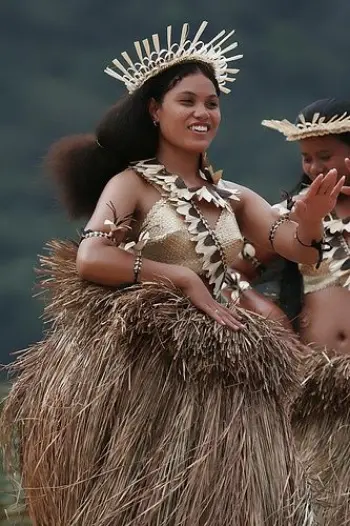
Historically, Kiribati’s traditional clothing was crafted from materials like pandanus leaves, coconut fibers, and hibiscus bark, emphasizing the islanders’ reliance on their natural surroundings.
These garments were designed to suit the tropical climate while reflecting the creativity and identity of the wearer.
See also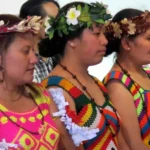 Traditional clothing in TuvaluA Fusion of Culture and Environment
Traditional clothing in TuvaluA Fusion of Culture and EnvironmentThe traditional attire also played a significant role in ceremonies, dances, and daily life, where specific clothing items symbolized status, community ties, and cultural pride.
Over the years, Kiribati has preserved these traditions, celebrating its unique heritage through its clothing.
What is the Traditional Clothing in Kiribati?
Kiribati’s traditional clothing is characterized by its woven designs, vibrant colors, and decorative accessories. Below are the distinct garments and elements commonly associated with traditional attire.
👔 Men’s Traditional Attire
- Loincloths (Te Roro): Men traditionally wore te roro, a loincloth made from hibiscus bark or coconut fiber, which was both comfortable and practical for the island’s warm climate.
- Dance Attire: For traditional performances, men don elaborate costumes featuring pandanus leaf skirts and accessories like shell necklaces or headbands.
👗 Women’s Traditional Attire
- Grass Skirts (Te Bui): Women wore grass skirts made from finely woven pandanus leaves. These skirts often had layers, with the outer layers dyed in bright colors using natural pigments.
- Upper Garments: Women paired their skirts with simple wraps or blouses made from bark cloth or cotton for ceremonial events.
- Head Adornments: Floral crowns and woven headbands embellished with feathers or shells are integral to women’s attire during festivals.
🌺 Shared Accessories
- Shell Jewelry: Necklaces, bracelets, and earrings crafted from seashells are a staple of traditional Kiribati attire.
- Feather Decorations: Both men and women incorporate feathers into their headpieces and costumes, symbolizing their connection to nature.
Regional Variations in Traditional Clothing
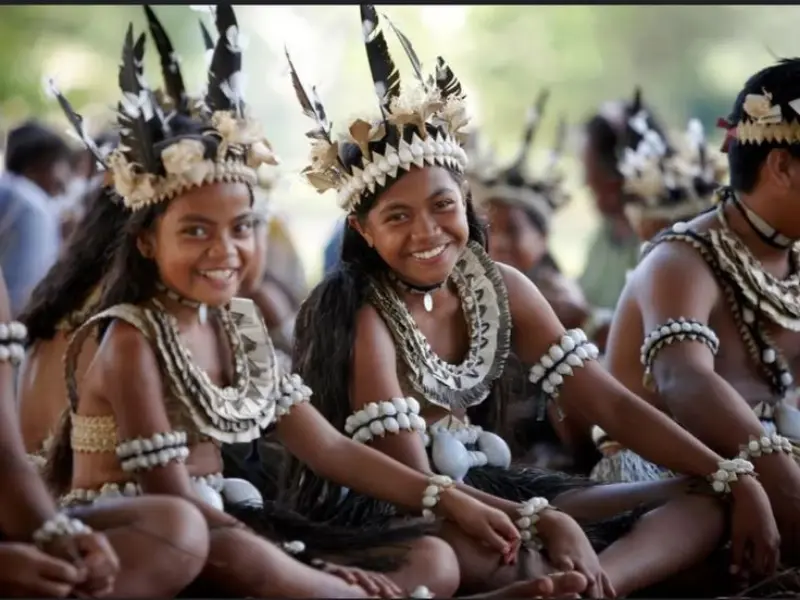
Though Kiribati is a relatively small nation, there are subtle regional differences in the styles and materials used in traditional clothing:
See also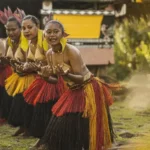 Traditional clothing in Palau
Traditional clothing in PalauNorthern Kiribati
- Bright Colors: Clothing often incorporates bolder colors, reflecting the vibrant landscapes of the northern islands.
- Shellcraft: Jewelry and adornments feature intricate designs using a variety of shells.
Southern Kiribati
- Earth Tones: Garments tend to use more natural, subdued tones, emphasizing a connection to the land and sea.
- Simpler Weaving Patterns: Clothing in this region often focuses on practicality, with less ornate designs.
Cultural and Ceremonial Significance of the Kiribati People
Traditional clothing holds immense importance in Kiribati’s cultural ceremonies and celebrations:
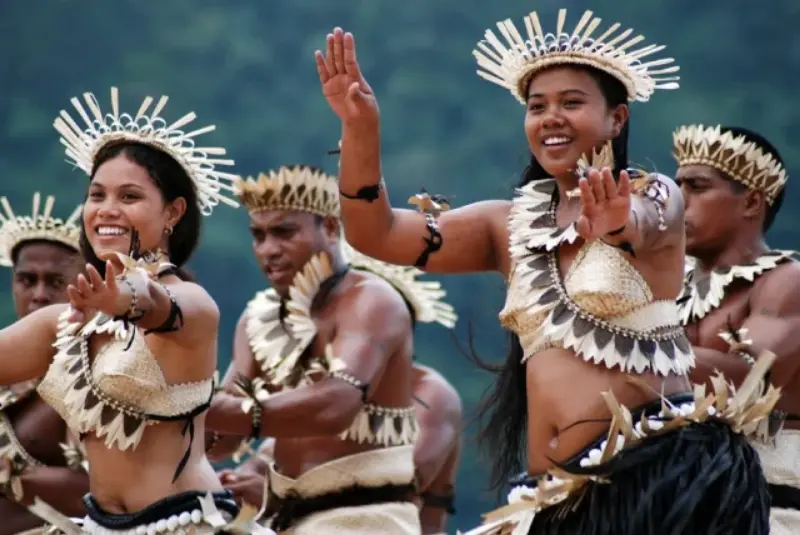
Dance Performances
During traditional dances such as the Te Kaimatoa or Te Buki, performers wear vibrant skirts, headpieces, and jewelry. These dances narrate stories of the ocean, the community, and their ancestors.
Community Gatherings
Festivals and gatherings often showcase traditional clothing as a way to celebrate Kiribati’s heritage. Attendees wear their finest woven garments to highlight the artistry and skill of local artisans.
Weddings and Celebrations
During weddings, couples and families don elaborate outfits, incorporating heirloom pieces that carry symbolic meanings tied to family and lineage.
Modern Influences and Preservation Efforts
Like many Pacific nations, Kiribati has seen a shift toward Western-style clothing in everyday life. However, the preservation of traditional attire remains a priority for the community:
- Cultural Education: Schools and workshops teach weaving and crafting techniques, ensuring that younger generations can continue these traditions.
- Festivals and Events: Annual celebrations like Independence Day prominently feature traditional clothing, fostering national pride.
- Tourism and Awareness: Traditional attire is showcased in cultural tours and performances, introducing visitors to Kiribati’s unique heritage.
The Enduring Legacy of Kiribati’s Traditional Clothing
Traditional clothing in Kiribati is more than just attire—it represents the island’s history, values, and identity. Whether through the artistry of woven skirts, the symbolism of shell jewelry, or the vibrant costumes worn during dances, these garments tell the story of a culture deeply rooted in its environment and traditions.
By embracing and preserving these customs, Kiribati continues to honor its ancestors and pass its cultural wealth to future generations, weaving the threads of its history into the fabric of modern life.
